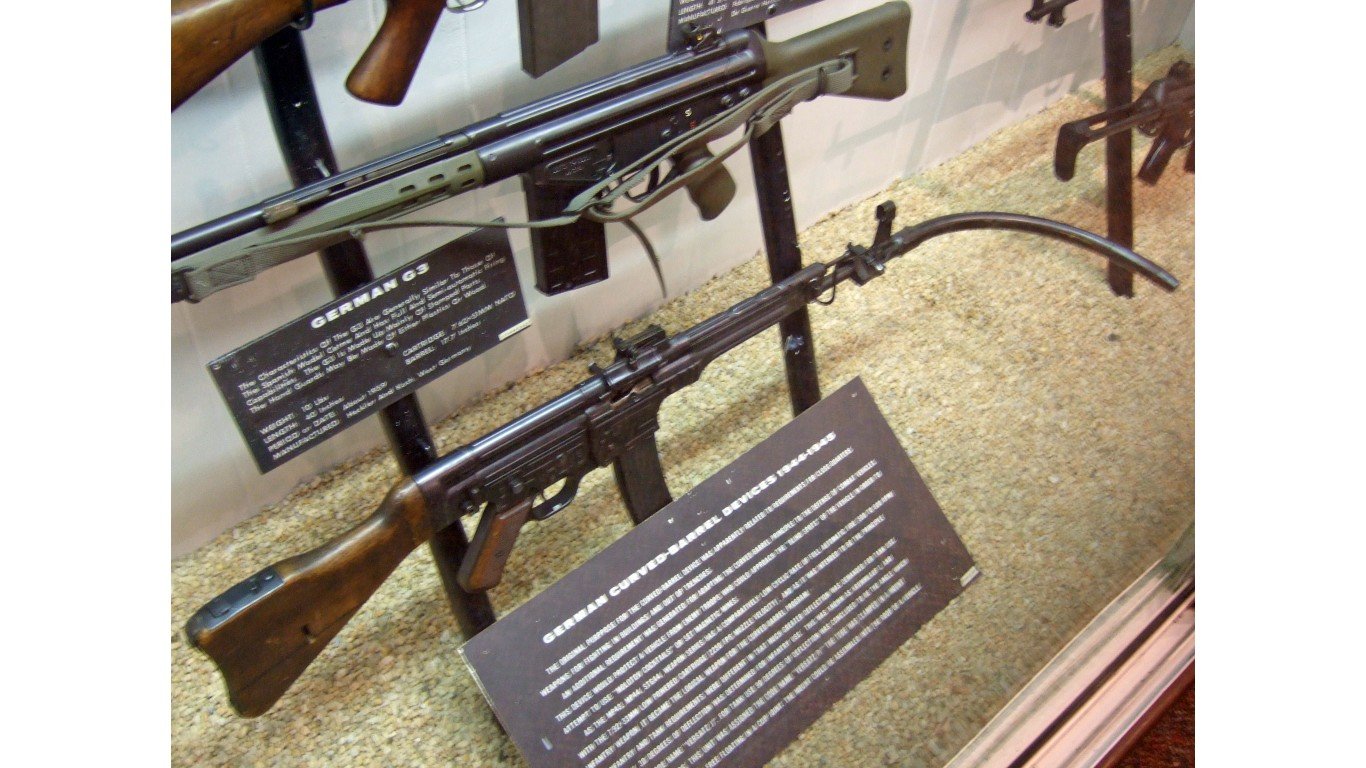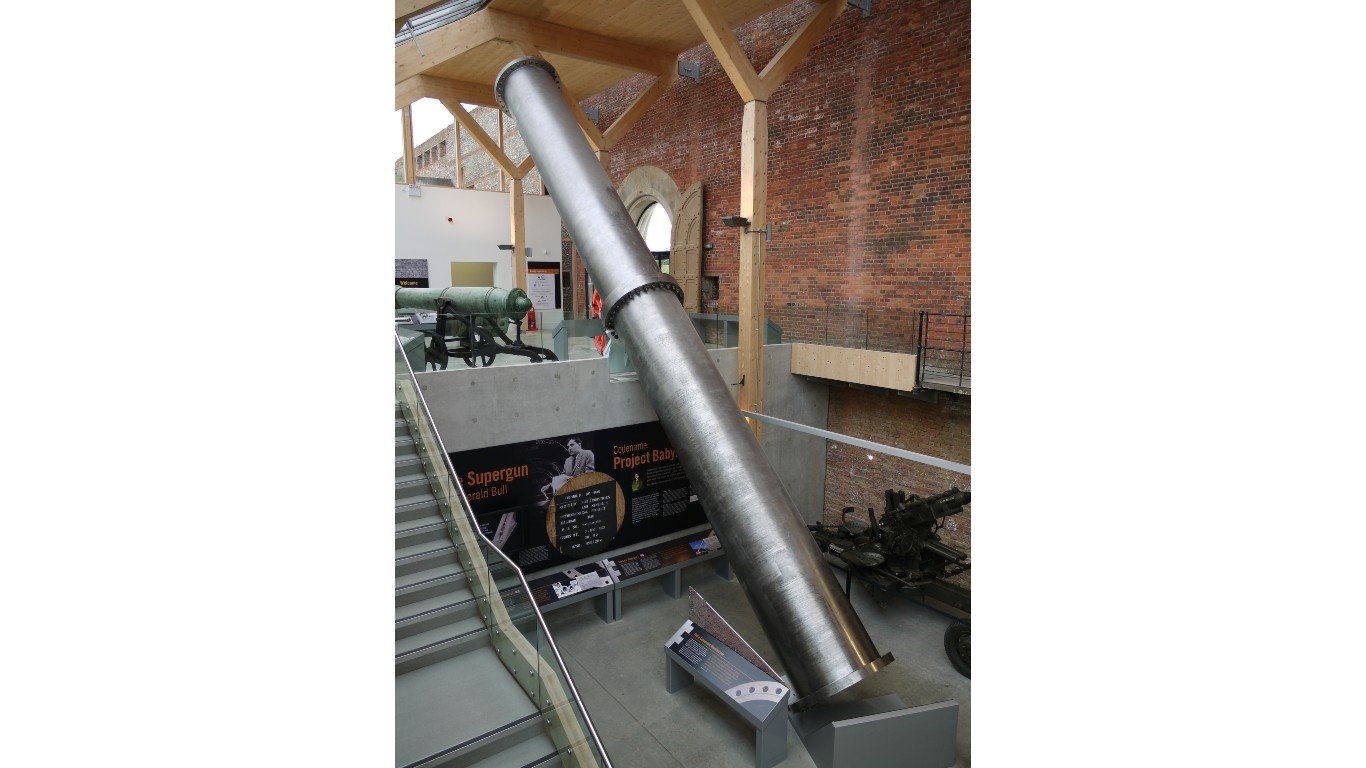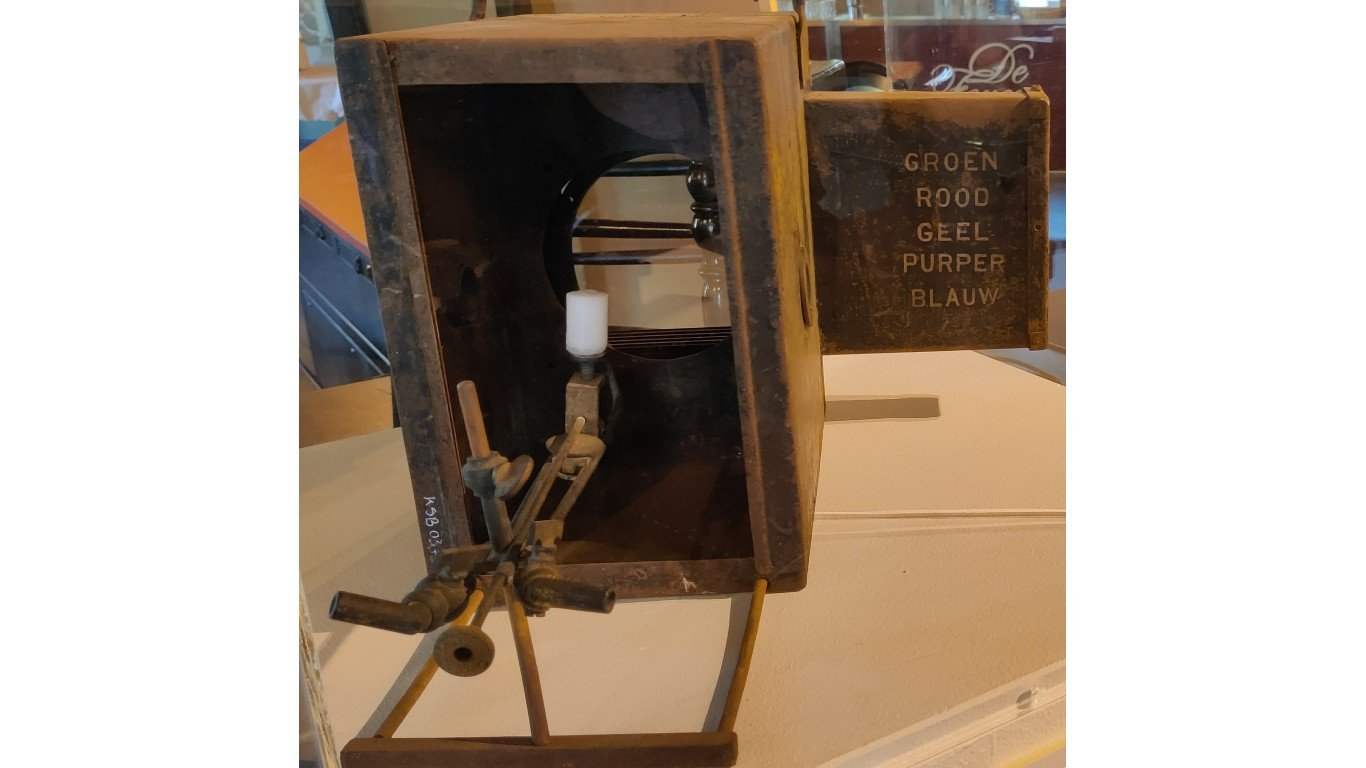Historians date the beginnings of warfare back almost 5,000 years, to 2700 B.C. when two neighboring kingdoms in the Middle East (of course) – Sumer in what is now Iraq and Elam, which was mostly in modern-day Iran – fought for reasons probably having to do with rights to agricultural land. (Sumer won.)
It’s hard to estimate how many wars have been waged since then, since “war” is difficult to define, but estimates of major conflicts run from 8,700 to 17,000 – though many smaller wars will have been unreported, so the number is undoubtedly much higher.
What is certain, however, is that since they started battling one another, humans have never stopped devising new and deadlier ways to win their fights. Sumer and Elam would have fought mostly with spears, swords, and daggers. Sometime after 800, the Chinese invented gunpowder, used initially for rockets and bombs, with guns appearing in the late 1200s. Artillery, aerial bombers, nuclear weapons, and military lasers followed all too quickly. (These are 30 inventions that shaped military history.)
Along the way, many bizarre weapons have been invented. To compile a list of 15 of the most unconventional weapons of war, 24/7 Tempo consulted sources including Britannica, Live Science, Imperial War Museums, Sandboxx, and Forgotten Weapons. Although there are countless other examples, we chose those that seemed particularly unlikely, whether in appearance, function, or intent.
The weapons on our list include strange firearms and artillery, novel bomb delivery systems, unwieldy-looking war machines, and – most concernedly – live animals pressed into suicidal service. The U.S. and U.K. between them are responsible for the majority of the entries here, though six other countries, including Ancient Greece, also have a place.
If some (all?) of these weapons seem too weird to actually have been used, the fact is that very few of them actually saw combat. Testing disasters and sheer inefficiency condemned many of them to the scrap heap before they could be deployed. (Here are some World War II weapons that didn’t work.)
Anti-tank dogs
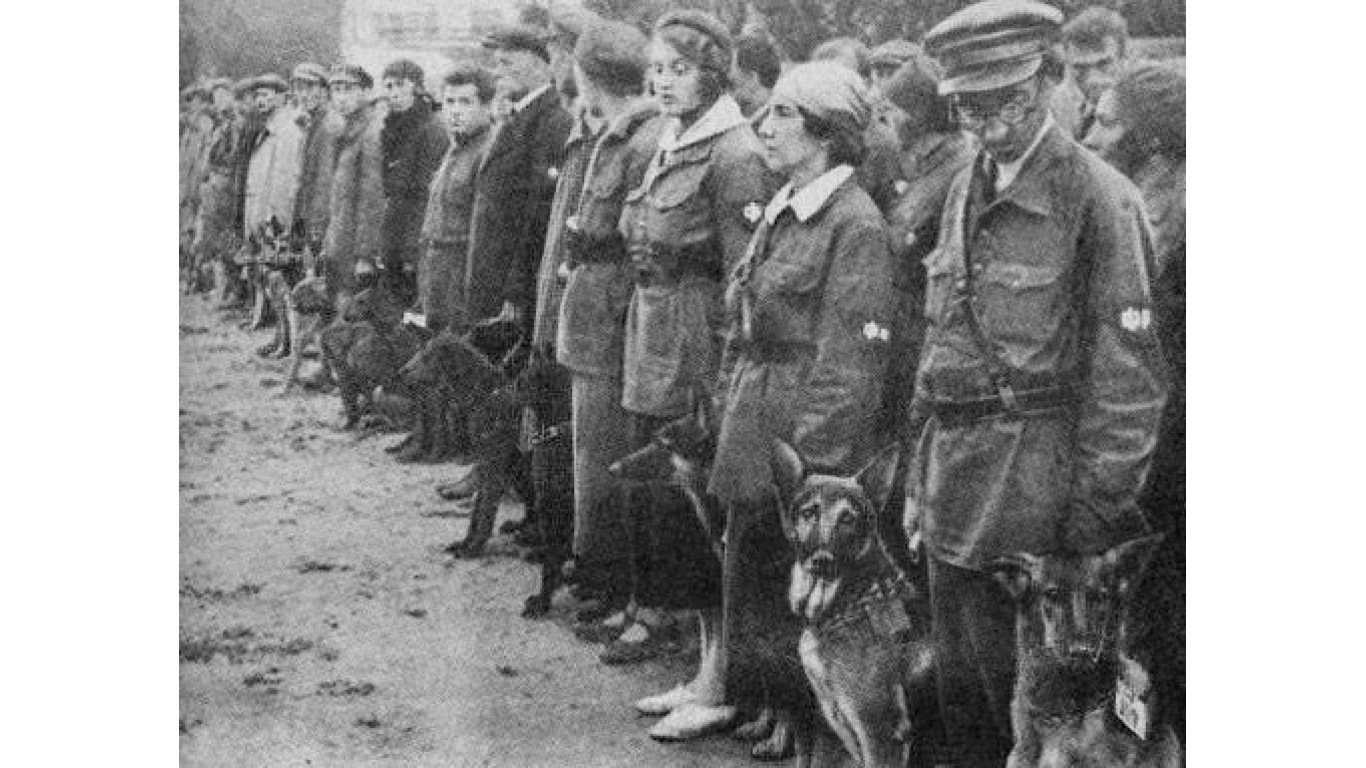
- Origin: Soviet Union
- When developed: 1941-1943
Dogs have been used in warfare since ancient times, to carry messages, sound warnings, and track fleeing enemies, and sometimes as attack animals. As early as 1930, the Soviets began training canines for another purpose – to carry explosives which would be detonated remotely when they reached their targets. These dogs weren’t pressed into service on a major scale until 1941, when they were deployed against German tanks. Their success rate was low, however, as they’d been trained on stationary vehicles and were reluctant to approach moving tanks. By 1943, their use had largely been phased out – though anti-tank dogs were reportedly still being trained, under the Russian Federation, as late as 1996.
Exploding rats

- Origin: United Kingdom
- When developed: 1941
Documents discovered in 1996 revealed that a covert U.K. government organization called the Special Operations Executive developed a wide array of deadly James Bond-style gadgets during WWII. One of their weirder inventions was the exploding rat. Real rats were collected (by an SOE officer pretending to need them for lab experiments), killed, skinned, filled with plastic explosives, and sewn up. The idea was that infiltrators would distribute the rats near boilers in industrial facilities, where workers would spot them and toss them into the fire – blowing the place up. The scheme failed, but had an unintended consequence: The Germans intercepted a shipment of prepared rats before they could be used, and the discovery unnerved them so much that they expended valuable resources on hunting for similar rats they feared might already have been distributed.
Curved-barrel rifle
- Origin: Germany
- When developed: 1944
The Krummlauf (“crooked run”) was an attachment for the German army’s standard STG 44 assault rifle that was supposed to allow soldiers to shoot around corners, sited with a periscope-like device. These units were made with barrels curving 30, 45, 60, and 90 degrees, though only the first of those was produced in any quantity. The Krummlauf-equipped rifles didn’t work very well. So much pressure built up inside the curved barrel that it only lasted for a few hundred rounds – and the bullets tended to break when they rounded the curve. It ended up being a waste of money and time for the Germans.
Robot dog
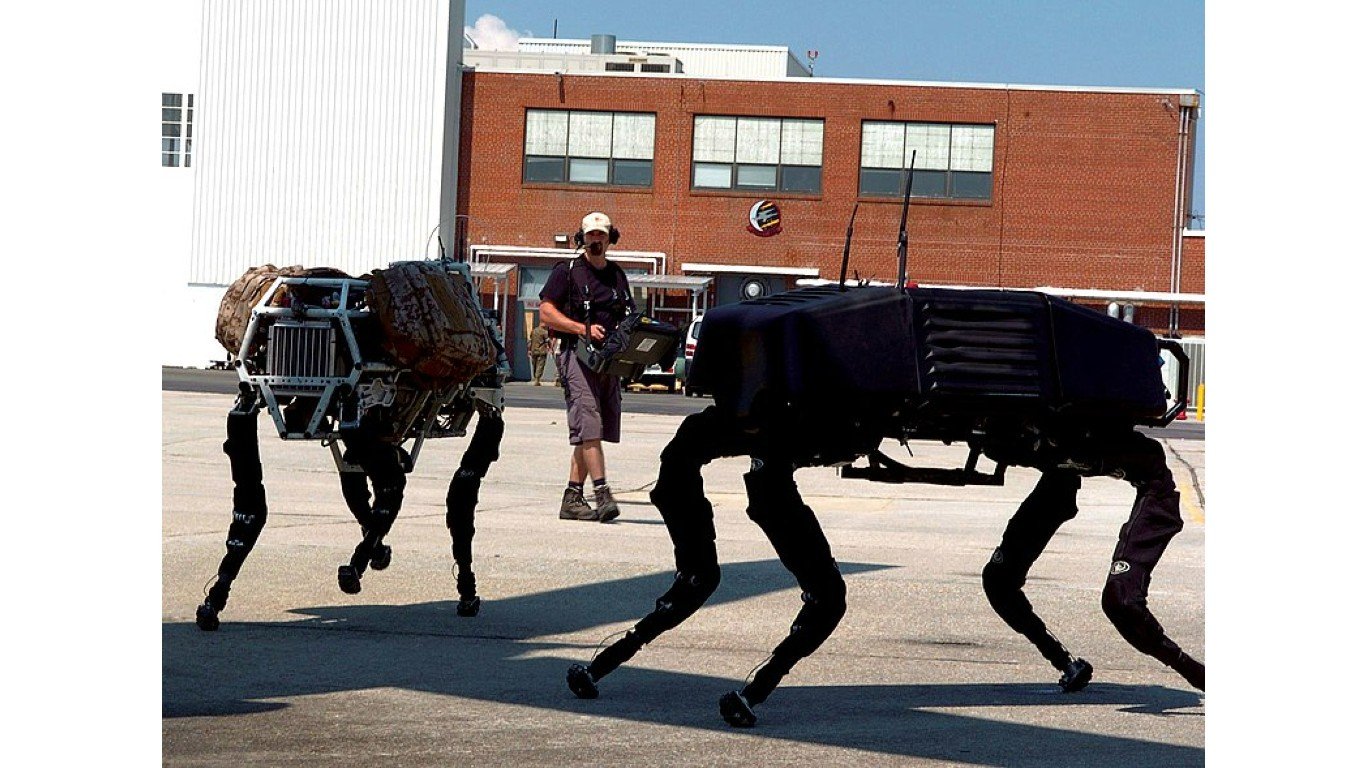
- Origin: U.S.A.
- When developed: 2005
A canine-looking military robot called BigDog was developed by America’s Defense Advanced Research Projects Agency (which also came up with the ARPANET, the precursor of the internet). It wasn’t a weapon strictly speaking but was meant to function as an automated pack animal, able to traverse uneven terrain while carrying weapons and other materiel. The problem was that it was powered by an internal combustion engine, which was judged to make too much noise for battlefield use, and BigDob was discontinued.
Bat bombs
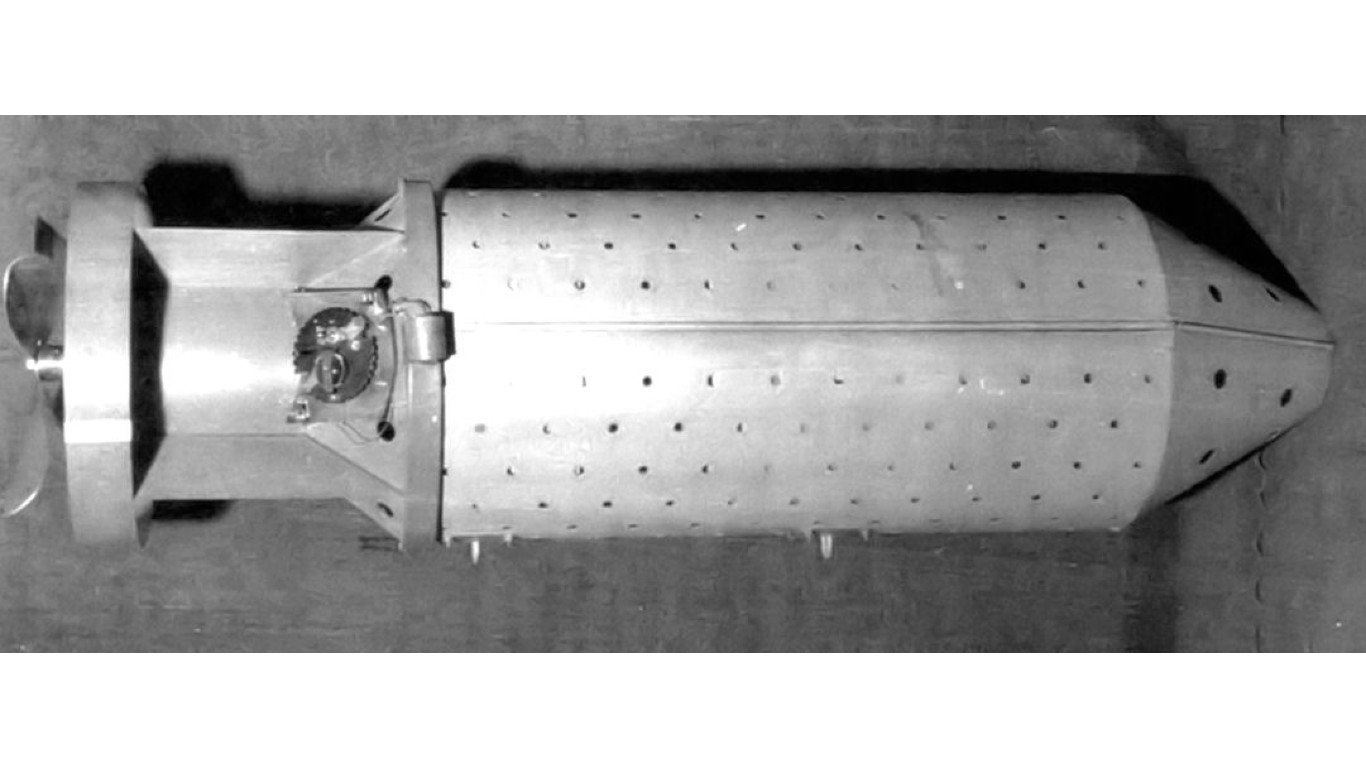
- Origin: U.S.A.
- When developed: 1942
In another example of animals being co-opted for destructive purposes, the U.S. developed an insidious use for bats. A large bomb was filled with tiny compartments, each containing a hibernating Mexican free-tailed bat with an incendiary device on a timer attached. The bomb would be dropped with a parachute and open in mid-air to release the bats. They would presumably find shelter in buildings nearby, where they would ignite at a pre-set time. They would have been particularly devastating in Japan, where many structures were made of wood and paper. After the bats accidentally set fire to an army airfield in New Mexico, the Navy took over the project, but it was eventually canceled because it was taking too long to get up to speed.
Hallucinogenic artillery shells
- Origin: U.S.A.
- When developed: 1950s
Extensive secret U.S. studies of the possible effects on soldiers in the field of various drugs, including LSD, began in the mid-1950s at the Edgewood Arsenal in Maryland. One result of this research was the development of softball-sized artillery shells filled with a substance called 3-Quinuclidinyl benzilate – BZ for short – an odorless powder known to cause delirium and hallucinations. The idea was to disorient enemy soldiers so that they were incapable of fighting. The Army tested the shells, but their effects proved to be too unpredictable, and they gave up on the idea.
512-foot cannon
- Origin: Iraq
- When developed: 1988-1990
Big Babylon was a supergun developed at the behest of Saddam Hussein by a Canadian engineer named Gerald Bull. It was designed to shoot projectiles into space from which they could presumably be directed back to earth, aimed at targets in, for instance, Iran or Israel. It was impractical because it was immovable and its firing would have revealed its location to enemies. Work on the project ceased in 1990 after Bull was assassinated, perhaps by the Mossad.
Hormone weapons

- Origin: U.S.A.
- When developed: 1994
“Make love, not war” might have been the slogan for this bizarre endeavor conceived by a U.S. Air Force research lab. The idea was to disperse sex pheromones over the enemy from a mid-air bomb, which would supposedly stimulate them to be sexually attracted to their fellow soldiers – the weapon was unofficially known as the “gay bomb” – and pursue romance instead of wanting to fight. Parallel ideas included dispersing compounds that would cover combatants with various foul bodily odors, presumably not only disorienting them but making them easy to locate. In reality, no pheromone has ever been proven to directly affect sexual behavior, so the gay bomb was never made. As for the other possibilities, let’s just say they didn’t pass the smell test.
Sticky grenades
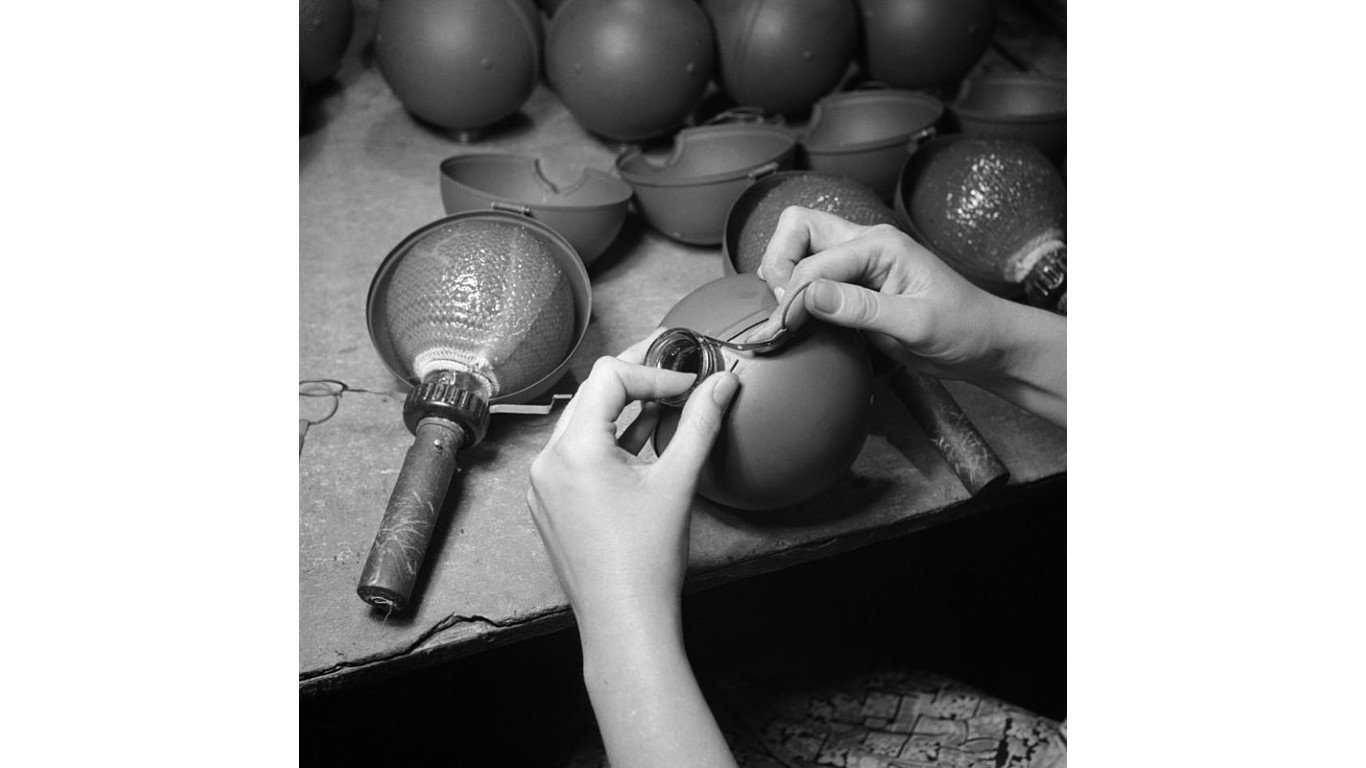
- Origin: United Kingdom
- When developed: 1940-1943
These were anti-tank explosive devices with a sticky exterior, meant to adhere them to their target vehicles. The grenades were widely used in the early years of World War II, with some success, but they didn’t stick to surfaces coated with dirt or mud – as tank exteriors tended to be – and, worse, they sometimes got attached to the clothing of the soldier who was attempting to deploy them. By 1943, they had largely fallen out of use.
Panjandrum

- Origin: United Kingdom
- When developed: 1943-1944
The Panjandrum – the name comes from a nonsense word coined by British actor and playwright Samuel Foote in the mid-18th century – looked like something out of a cartoon. It consisted of two metal-treaded wooden wheels, 10 feet in diameter, revolving around a steel drum full of explosives. The wheels themselves were propelled by cordite rockets set along their inside rims. The idea was that the rockets would propel the Panjandrum into concrete fortifications, at which time the explosives would blast an opening large enough for a tank to pass through. In testing, however, the rockets tended to detach and fly off into space, and the entire unit proved difficult to control. On the occasion of what turned out to be its final test, it lurched towards observers, nearly reaching a photographer, before turning, crashing, and disintegrating. Needless to say, the project was quickly canceled.
Heat ray
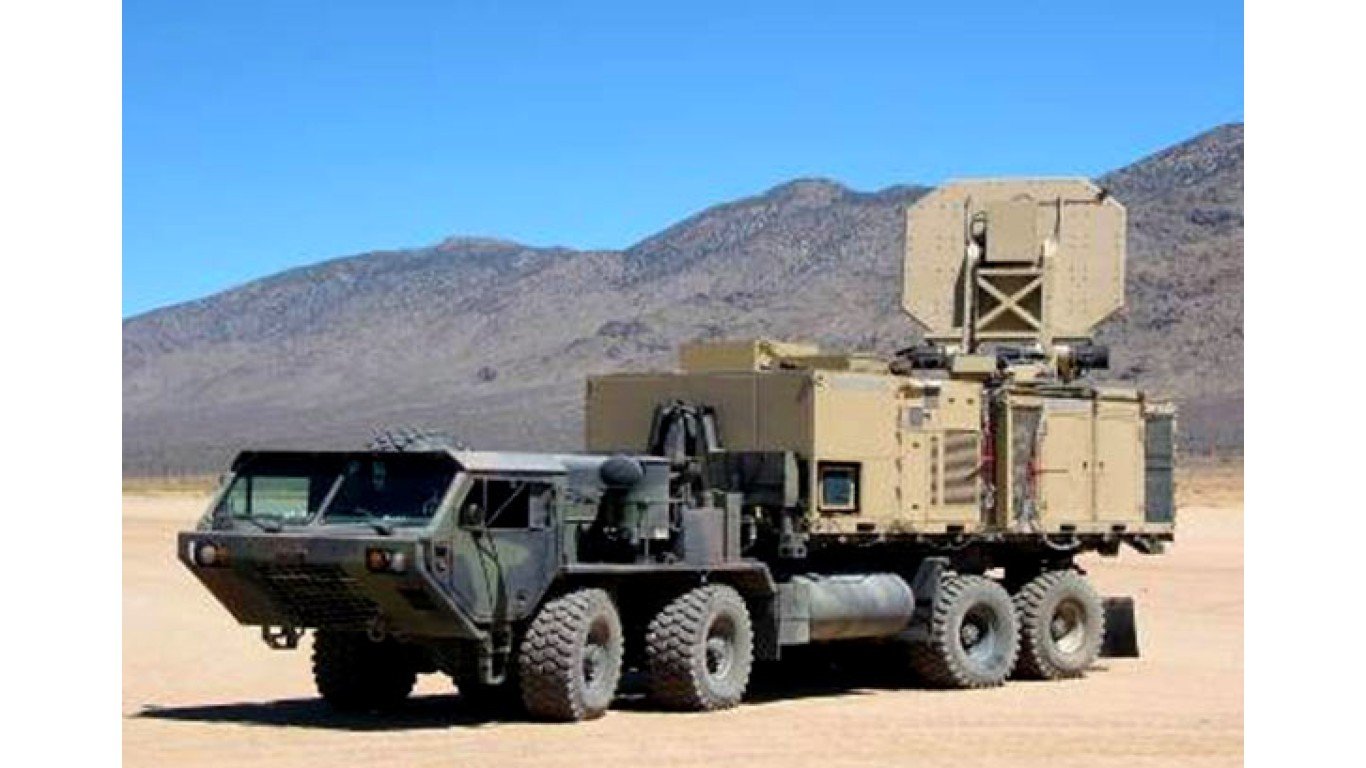
- Origin: Ancient Greece
- When developed: 213-212 B.C.
It might sound like something out of “Star Wars,” but the great Sicilian-born Greek mathematician, scientist, and inventor Archimedes is said to have created a devastating heat ray by assembling a bank of mirrors that focused sunlight onto Roman ships during the Siege of Syracuse, causing them to burst into flame. Some modern scientists are skeptical, and attempts to reproduce the effect have had mixed results – though some did in fact start conflagrations on dummy ships. At the very least, historians agree, the mirrors would have blinded sailors and possibly disoriented them, giving the Greeks a tactical advantage.
Fire balloons
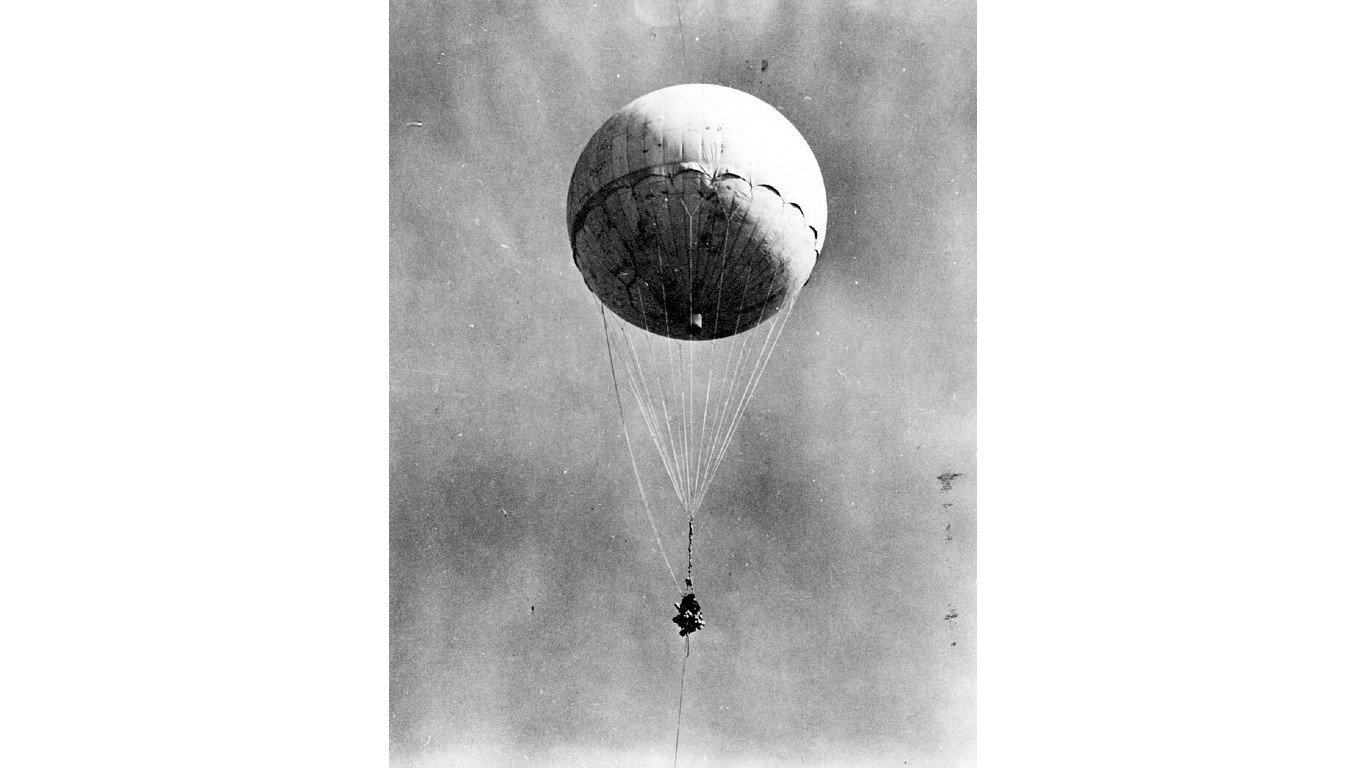
- Origin: Japan
- When developed: 1944-1945
Developed by the Imperial Japanese Army’s research institute, these were paper balloons filled with hydrogen gas, with incendiary devices attached. Thousands of them were launched across the Pacific from Japan’s western coast to travel the Jet Stream towards the U.S., with even their creators estimating that only about 10% would successfully make the crossing. They were intended to ignite forest fires in heavily wooded areas, panicking residents and demonstrating the reach of the Japanese military. Because they were launched in winter and early spring, however, the forests were damp, and even those few that made it across had no effect. Remains of the balloons were subsequently found in some 17 states, as far east as Michigan, and in the then-territories of Alaska and Hawaii, as well as in parts of Canada and Mexico. One fire balloon did claim American lives, when a minister, his pregnant wife, and five Sunday School students happened across an unexploded one in the forest near Bly, Oregon. They may have dropped or jostled it, and it went off, killing them all.
Incendiary pigs

- Origin: Ancient Greece, etc.
- When developed: 3rd century B.C. and later
Perhaps the cruelest of all military uses of animals were pigs coated in resin or pitch, set aflame, and sent towards the enemy. The earliest account of their use comes during the siege of Megara, in Greece, in 266 B.C. The Macedonian forces attacking the town had an army of war elephants, and the approach of the burning pigs, squealing in pain and fear, terrorized the pachyderms, some of whom trampled Macedonian soldiers to death in their panic. Other Greeks and also the Romans reportedly used the technique with success in subsequent battles.
Calcium floodlights
- Origin: U.S.A.
- When developed: 1863
In a latter-day tactic reminiscent of the heat ray perhaps devised by Archimedes in ancient times, Union forces besieging the Confederate-held Fort Wagner at the mouth of Charleston Harbor repurposed calcium floodlights, also known as limelights, from their use as stage lighting. The intense beam these lights throw were focused at the fort during the night, simultaneously illuminating it for the benefit of Union artillery and temporarily blinding the Rebels.
Tsar tank
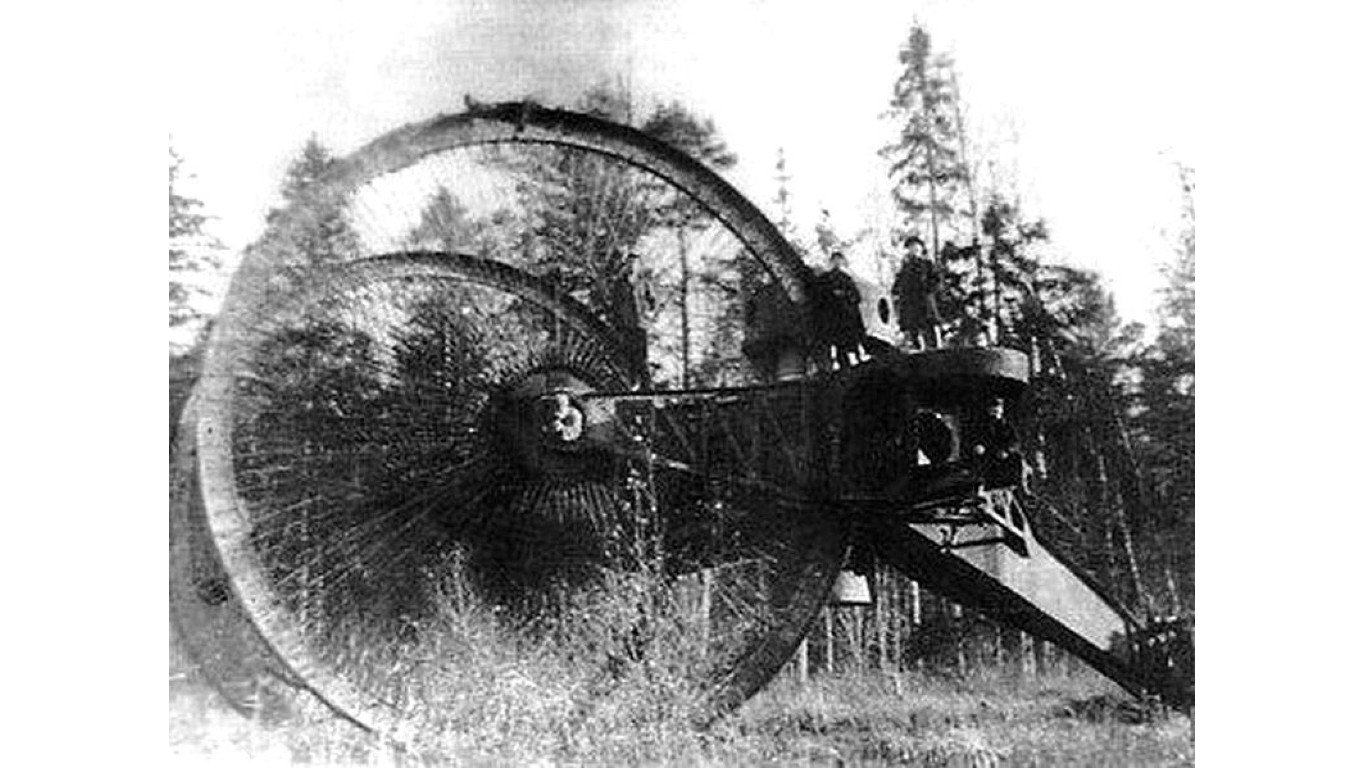
- Origin: Russian Empire
- When developed: 1914-1915
This outlandish-looking armored vehicle, built for tsarist forces in pre-revolutionary Russia, didn’t run on treads like conventional tanks, but on three wheels like a tricycle – the front two nearly 30 feet in diameter and the third a mere five feet high. The larger wheels were each powered by a Maybach engine taken from a captured German plane. Development of the tank came to a halt in 1915 after it became stuck in soft ground during a test, and not even its powerful engines could extricate it. Two of the tank’s creators were determined to fit it with an engine that would overcome the problem and continued to work on it even after the cancellation. They were unable to free it from its resting place, however, and after the Russian Revolution of 1917, it was forgotten and left to rust until 1923, when it was taken apart and sold for scrap.

